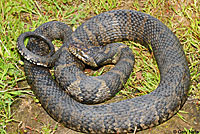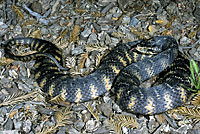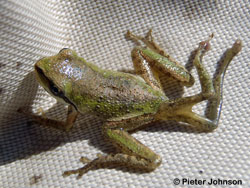
A Guide to the Amphibians
and Reptiles of California

Report Your Observations of Native and
Non-Native Wild Amphibians and Reptiles

| If you see a reptile or amphibian in the wild, dead or alive, and want to report the observation to an organization to help them keep track of the status of herps in California and around the world, you can send your observations and photos of the animal to one or all of the organizations listed below. You can also look at herp observations that others have made. In most cases, after you join the organization, all you need to do is log in and fill out a simple form to make a report. These organizations are not affilitated with CaliforniaHerps.com. Please contact them if you have any questions. |
 |
| Add your observations of reptiles and amphibians to the H. E. R. P. Database (Herpetological Education & Research Project) a North American Field Herping Association (N. A. F. H. A.) project. Go to www.naherp.com, read and agree with the N. A. F. H. A. bylaws, then create an account, log in, and add a new record for your observation. You can add pictures also. Here is some information about how to enter data into the database and the security of the location information you report. More information is available on the N. A. F. H. A. Forums which are hosted by FieldHerpForum.com. |
  |
| You can also add your observations of wild amphibians and reptiles to iNaturalist.org. The Global Amphibian BioBlitz or the Global Reptile BioBlitz projects are citizen science/social networking organizations created to document observations of wild amphibians and reptiles around the world. The RASCals program collects information about the amphibians and reptiles of Southern California. |
| You can also add your observations of reptiles and amphibians to HerpMapper "a cooperative project, designed to gather and share information about reptile and amphibian observations across the planet. " |
Report Non-Native Watersnakes Seen in California |
| If you find an aquatic snake in California that you think is a Watersnake (Nerodia - similar to those shown below or here, and here), please send pictures of it to the California Watersnakes Site, which is tracking the distribution of this potential threat to native fish and wildlife. |
  |
Report Deformed Frogs Seen in California |
| Severe deformities and malformations have been reported in amphibian populations with growing frequency since the early 1990s. Typically such abnormalities involve the limbs and especially the hind limbs of affected frogs, including deformities such as extra limbs or digits, missing limbs or portions of limbs, or limbs that are twisted and misshapen. These abnormalities are most common in frogs that have recently metamorphosed from their tadpole stage, likely because affected individuals do not survive to adulthood. Malformed individuals do not swim, jump or forage as well as their normal counterparts and field studies have shown they have reduced survival in natural populations. If you see frogs with deformities or malformations, photograph them and record the location where you observed them. This information is extremely useful to researchers. You can send along an email account to pieter.johnson@colorado.edu. You can read more about frog deformities on the CaliforniaHerps page, and read about amphibian malformations on the Johnson Lab Web Site, and you can look at and download a .pdf brochure about amphibian conservation and frog deformities. |
 © Pieter Johnson |
Report an Invasive Species Sighting to the |
| https://www.wildlife.ca.gov/Conservation/Invasives/report |
Report a Nonindigenous Aquatic Species Sighting to the USGS |
| https://nas.er.usgs.gov/SightingReport.aspx |
Report a Rare Herp Sighting to the |
| You can find out how to submit data to the California Natural Diversity Database (CNDDB) about rare species here: https://www.wildlife.ca.gov/Data/CNDDB/Submitting-Data#44524419-online-field-survey-form |
Return to the Top
© 2000 -
